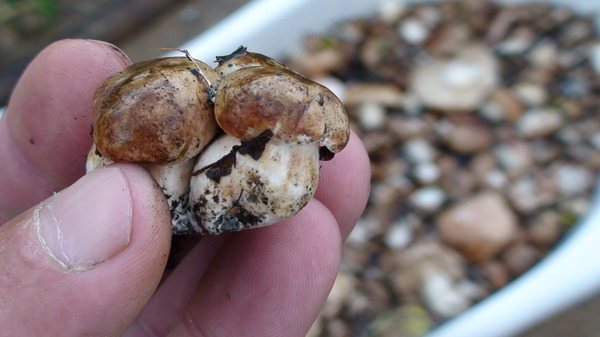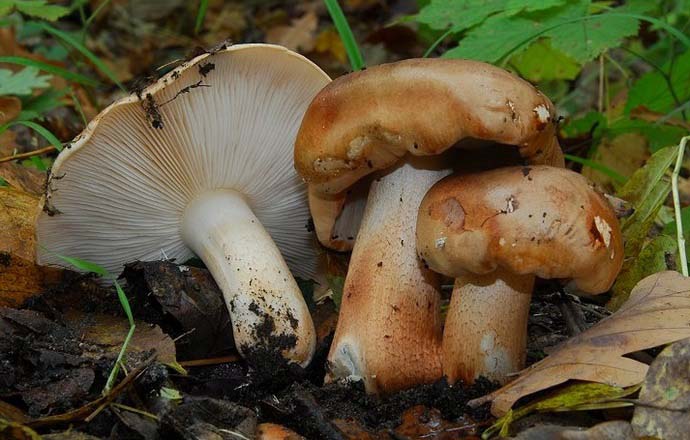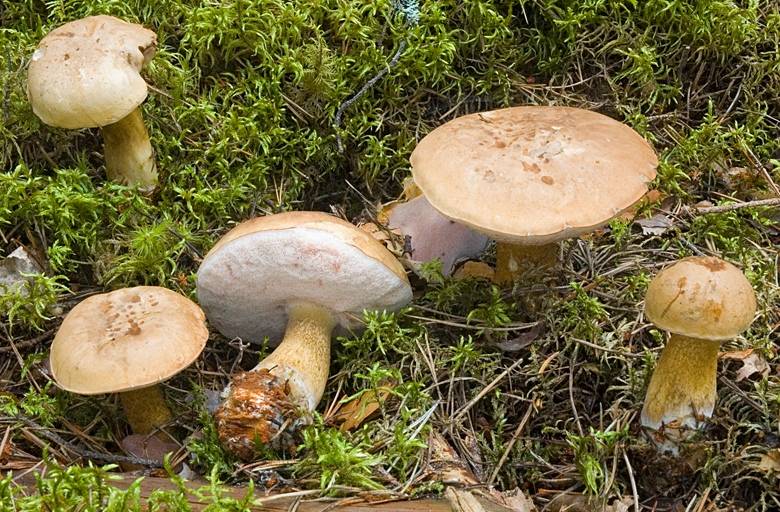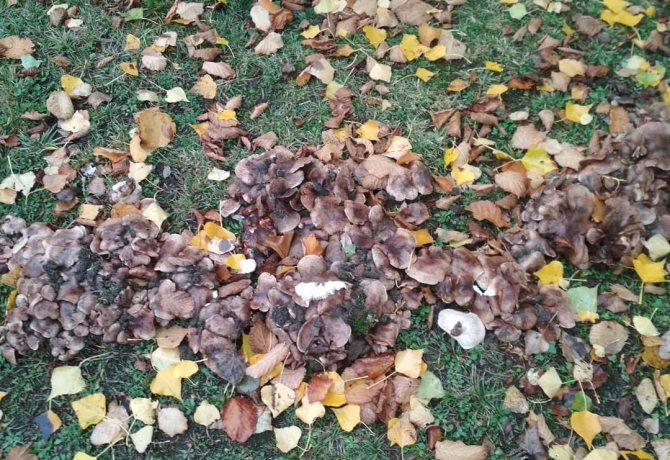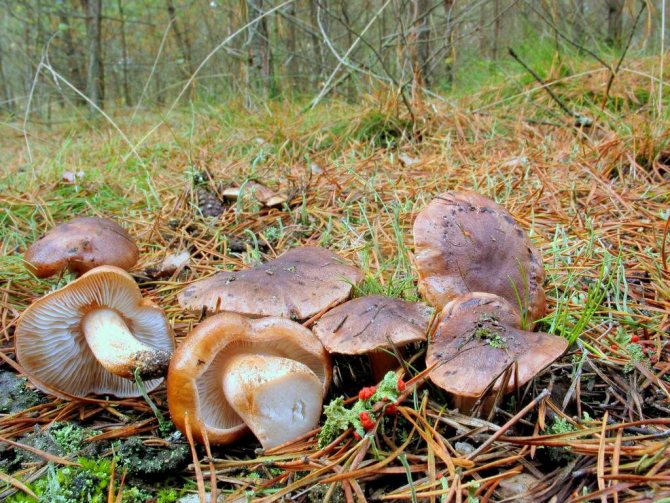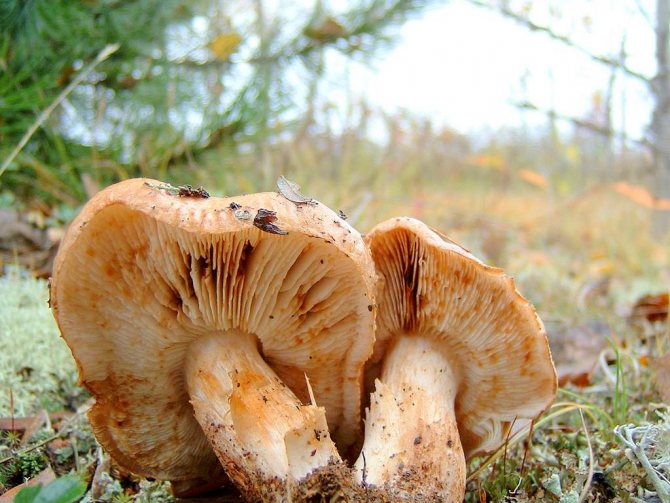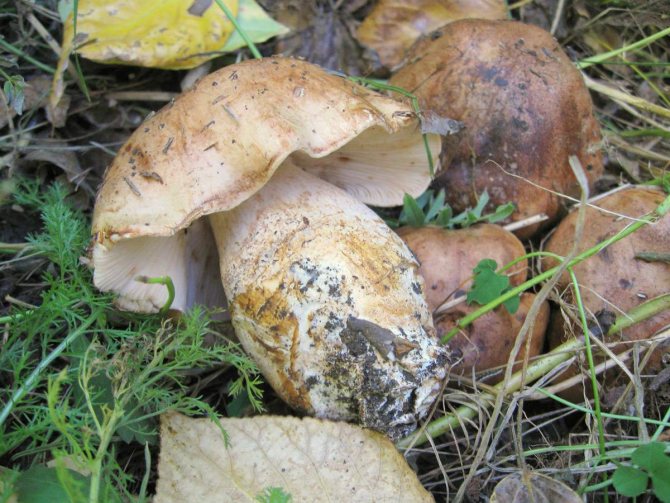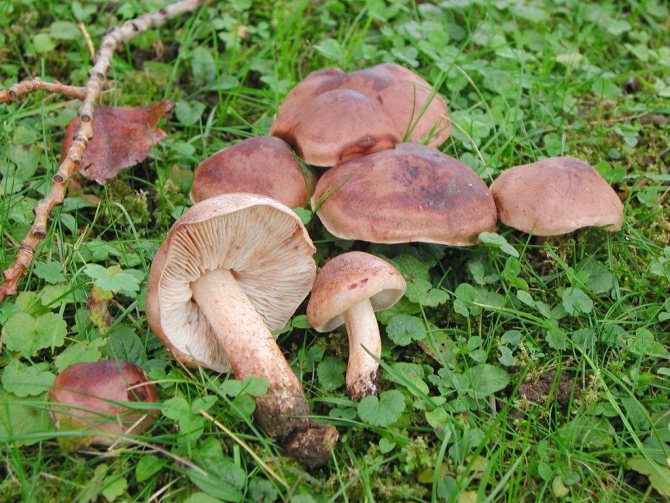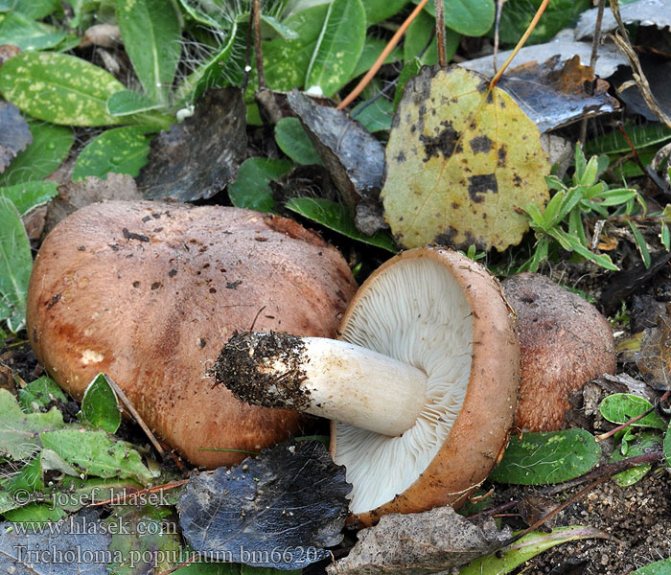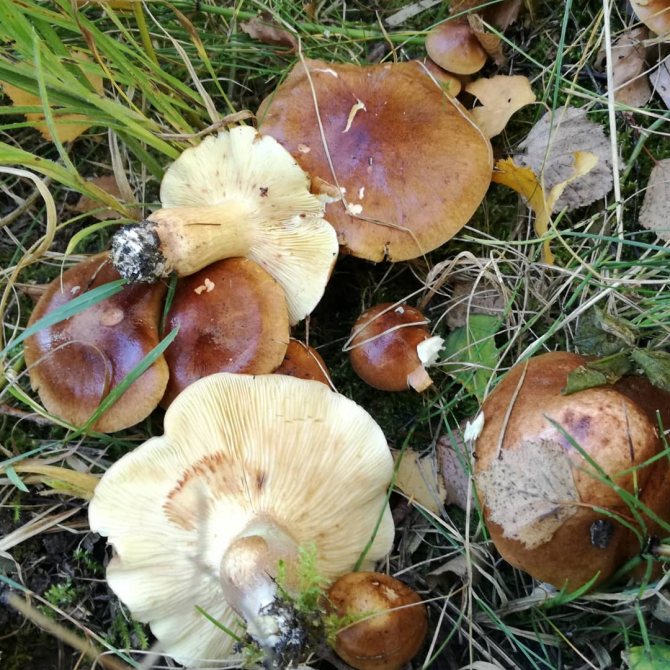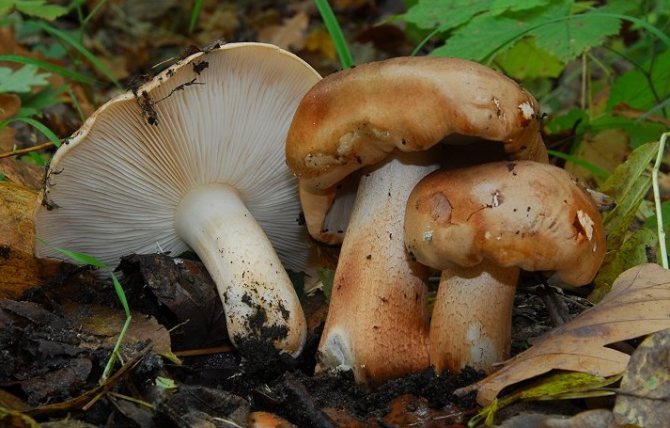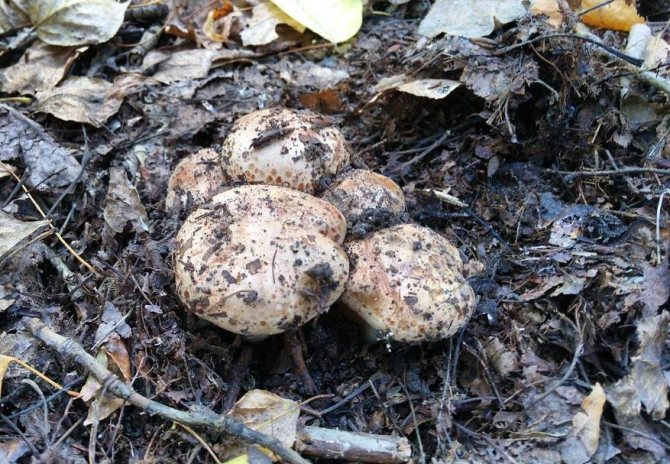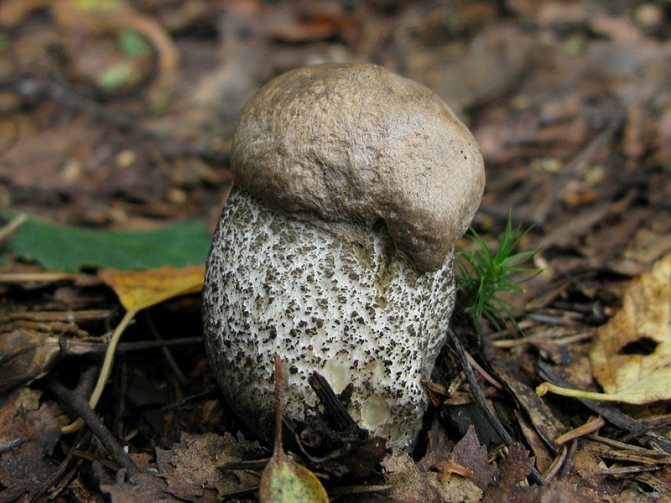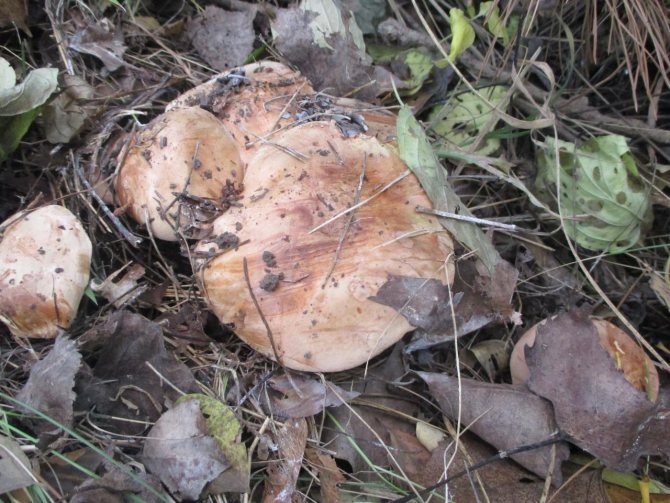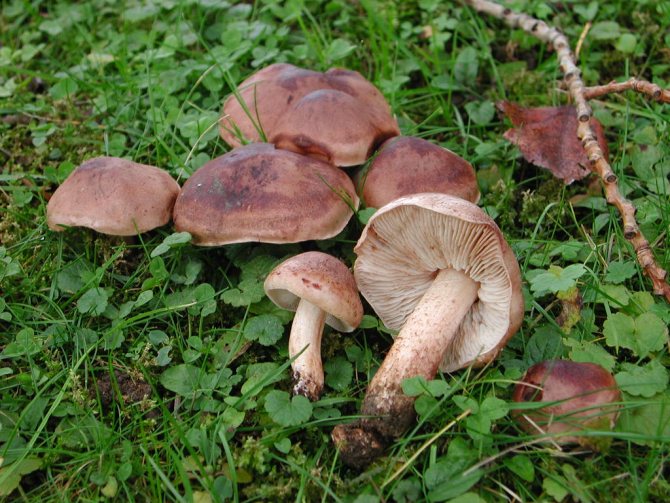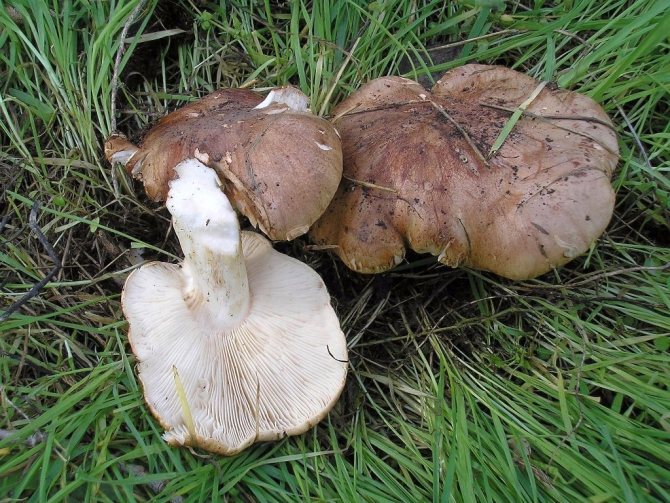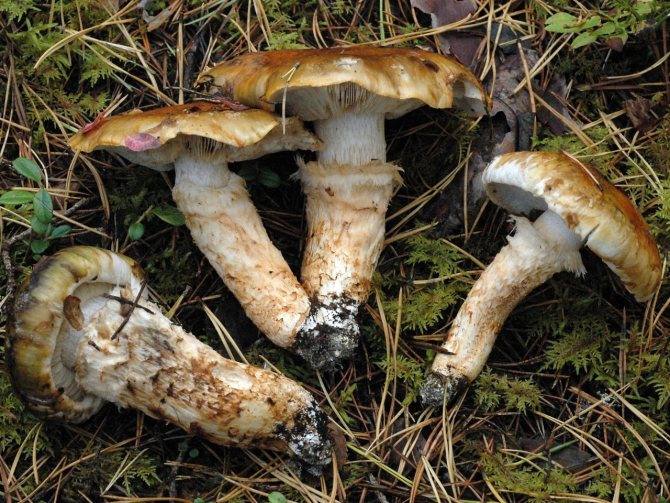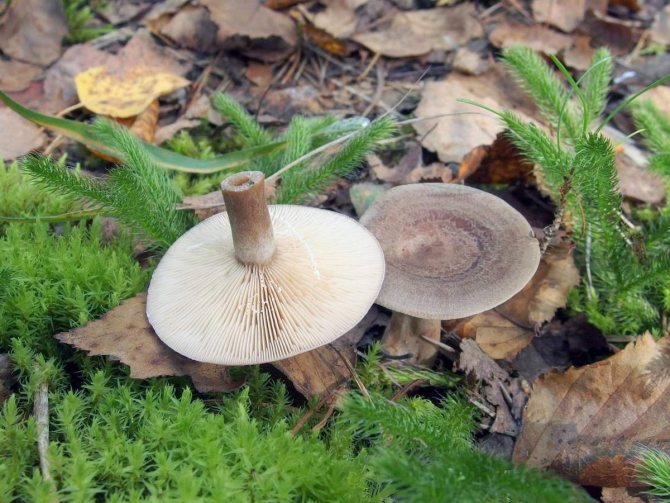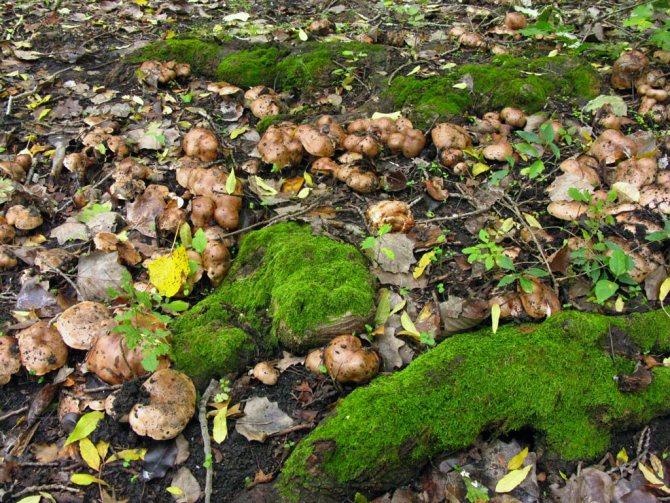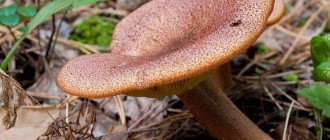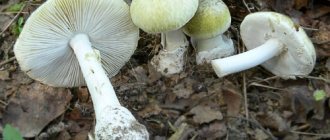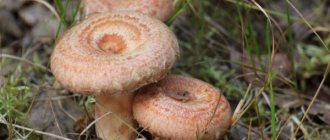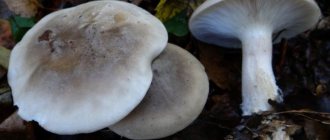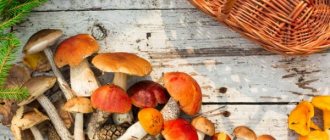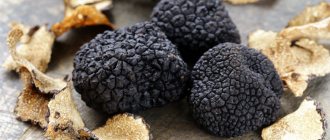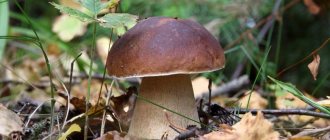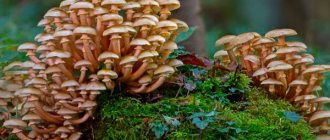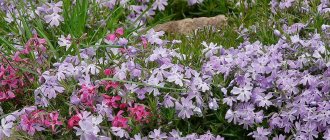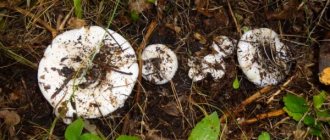»Mushrooms» Conditionally edible mushrooms »Poplar mushroom: where to find and how to cook
0
127
Article rating
In autumn, mushroom pickers arrange a quiet hunt for poplar mushrooms. They can be found almost throughout the territory of Russia, with the exception of the North. Universal fragrant fruits are readily used in cooking - they are fried, boiled, stewed and pickled.
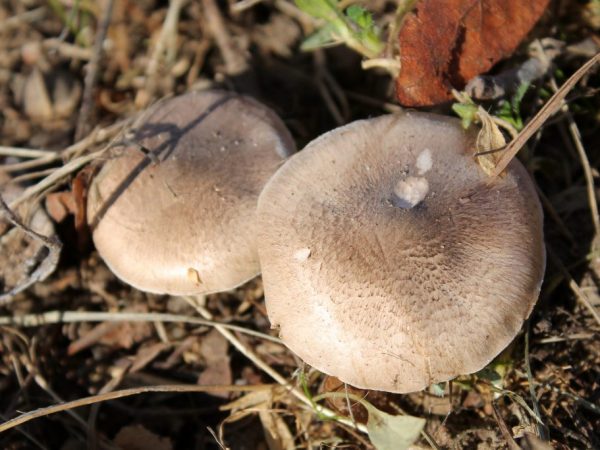
Poplar mushroom: where to find and how to cook
Description of underfloor mushrooms
The family of Ryadovkov / Tricholomovs is named so not for "love" to geometrically correct constructions, but for crowded growth. In one place, mushroom pickers sometimes collect 1.5 buckets. Poplar ryadovka is no exception in this regard.
Its Latin name is Tricholoma populinum from the genus Tricholum. When determining a poplar row from a photo and description, it is better to focus on Latin. In the regions, the mushroom is called differently:
- underfloor;
- poplar;
- underfloor;
- poplar rowing;
- sandstone;
- sandpiper;
- zabaluyki;
- frosts.
These are one and the same type of poplar rows, not different mushrooms. But other representatives of the Tricholomaceae family can also be called sandpots and sandstones. Fruit bodies with tricholas often “hide” underground. Hence such strange names.
But ryadovki, including poisonous varieties, can be found everywhere in coniferous and deciduous forests. The real podpolnik belongs to the group of conditionally edible.
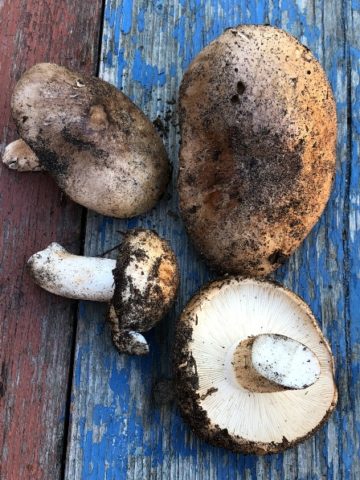

What do underfloor mushrooms look like?
Often poplar rows look like small bumps of earth. Some amateurs even look for them with rubber shoes: a hard lump is well felt under the thin sole. Leg of medium size: 2-10 cm. Most often about 4 cm high. Diameter (2-4 cm) is almost the same along its entire length. Only at the very mycelium, the leg barely noticeably thickens.
Inside, the leg is dense, without cavities, fleshy. The consistency is dry. The color is pinkish brown (old) or pinkish white (young). The surface can be smooth or fibrous. Covered with flaky scales. When pressed, brown spots remain on the stem.
In a young underfloor, the cap is in the shape of a hemisphere. The edges are thin and curved inward towards the stem. As it grows, the cap straightens out, becomes fleshy and slightly curved. The skin is pinkish brown. It becomes slippery in rainy weather. The diameter of the cap is 6-12 cm.
The hymenophore of a young underfloor is white; with age, the plates become pink-brownish. The flesh is white, but under the skin of the cap it has a brownish color. Becomes brown at the break. Opinions about the smell vary. References usually indicate the pleasant aroma of fresh flour. But some mushroom pickers believe that the poplar ryadovka smells like soap. In fact, there is a high probability that poplar is confused with soap. The latter really smells like fruity soap.
And the reason for the discrepancies, apparently, is confusion again.
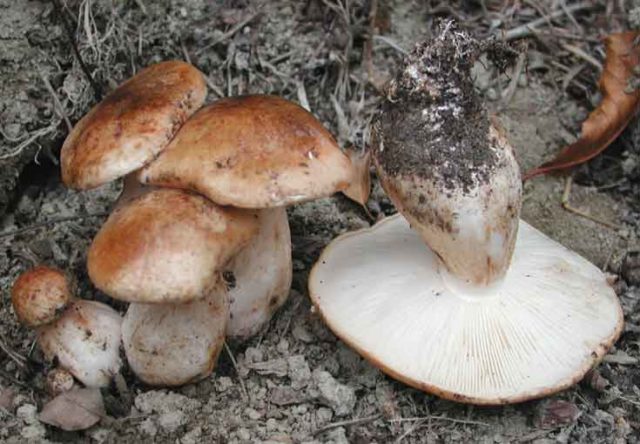

Where do the floodplains grow
Distributed in the south of Russia and Siberia. They are also found in Europe. They live in symbiosis with poplars, so this species can be found only in natural poplar groves and artificial windbreaks.
The peculiarity of the poplar row is that it grows in large groups and is not found in ordinary deciduous forests. She forms a symbiosis with poplars and prefers sandy soil.But due to the fact that usually the experience of picking mushrooms is passed on from generation to generation, confusion often arises with the names. This is how various "false underfloormen" appear, but in the photo, in this case, you can usually see another row. And it's also good if this species is edible.
It must be remembered that this poplar row is a satellite of poplars. In mixed and coniferous forests, other rows grow. Often no less tasty, but not poplar.
When the floodplains grow
The gathering time for the underfloor population is mid August - early October For harvesting and preparing fresh mushrooms, the underfloor mushrooms are collected young, the cap has not yet opened. Fruiting bodies at this age are hard, there are almost no worms in them.
Sandstone mushroom. Gerbil mushrooms photo and description
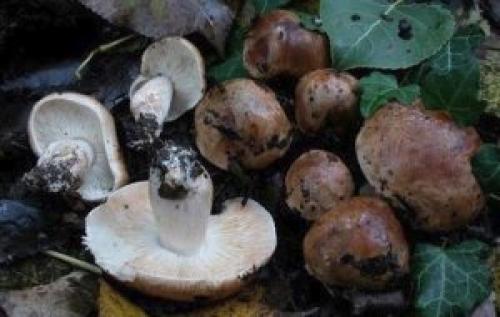

- mushrooms that can be found in the forest only if you look closely. After all, they are hiding under a hill of sand and pine needles. And if you dig up this embankment, you will find a whole family. But what to do with this find - let's figure it out further.
Sandpipers are in the edible category. They can be pickled, fried, boiled, stewed and salted.
The only drawback is that the soil in which they grow often stains them, so the product must be carefully processed before use. But this process is worth the finished result - the dishes are tasty and aromatic.
The mushroom also has such names: sandstone, poplar, poplar ryadovka, underfloor and underfloor.
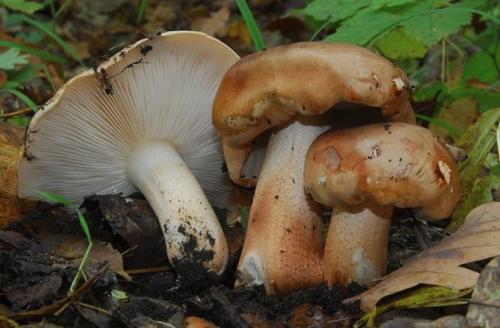

At first, it is convex in the middle and with edges curled inward. As it grows, the hat straightens and bends inward. It is fleshy, and with high humidity or after rain it is slippery, acquires a light brown color. The diameter can reach 12 cm. The flesh of the cap is reddish.
They are frequent, thin. At first, they have a white and cream color, and then, together with the cap, they begin to brown.
Small and thin - up to 7 cm. The color can vary from white to milky. The inside is solid and fleshy. Outside there is a small scaly coating.
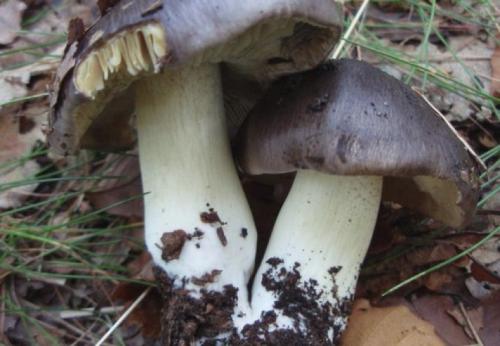

White, soft, fleshy, firm. Under the skin it has a brownish tint, flour and bitter taste.
... Sandy soil. Their name, poplar, mushrooms got just because of the place of growth. They can be found near poplars and stumps. They are also found along plantings, parks. There is a high probability of meeting them in the European part of Russia and Siberia.
Sandpipers are collected from August to September. They grow up in large families of different ages.
In total, there are about 40 types of sandpipers, which have a different name - ryadovki. They come in a variety of colors, from grayish to brown. But the most popular are only three.
The main difference between this species is its green color. It does not change even after prolonged heat treatment. The mushroom is edible, but in small doses and after soaking and boiling. You can add it to any dish. Bonus - it can be found before the first snow.
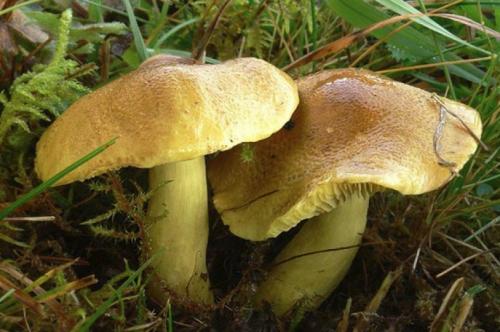

Edible, with a gray color. It is suitable for consumption after heat treatment. Dangerous when raw.
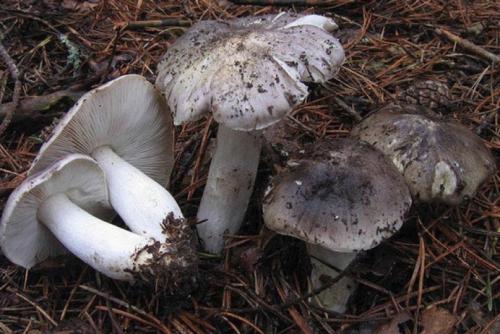

Conditionally edible - only after long and proper preparation is it suitable for consumption. It has a red color, a distinctive feature is yellow flesh. Before cooking, soak in a saline solution for at least a day, then you can salt, fry or boil.
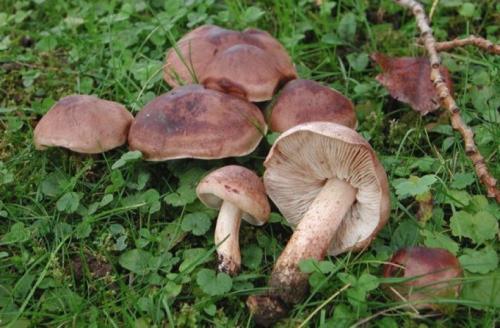

Sandpipers in the family have a lot of species that are not only inedible, but also poisonous. Some of them have their own distinctive features, by which you can identify a bad mushroom.
Let's consider the most common types:
- similar to an earthy ryadovka, but very toxic, it has white mouse plates, on the cap there are characteristic specks; the mushroom does not have a flour taste and smell, like an edible species;
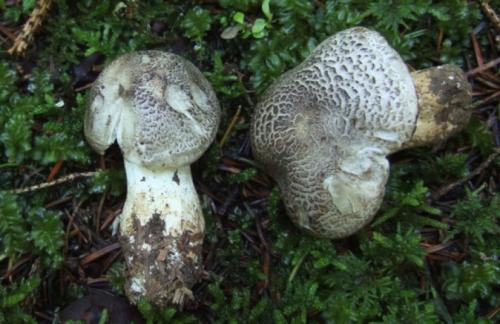

- mouse pointed ryadovka is a low-toxic species, but not worth using.It can be recognized by the dark protruding sharp hump in the middle of the cap. Odorless, old mushrooms have yellow spots;
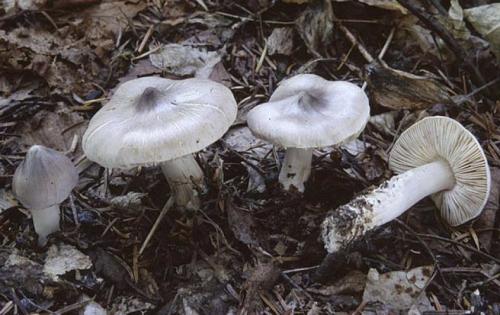

- soap ryadovka - the type that is most often confused with edible. Has a fruity-soapy, not very pleasant smell, the flesh turns red on the cut;
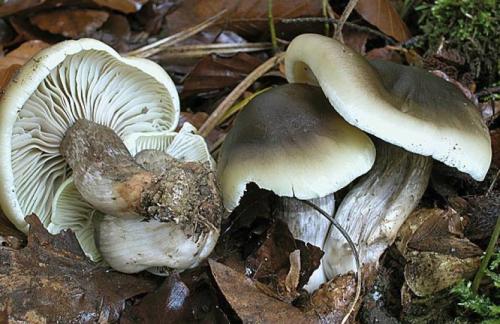

- brown ryadovka - a dark mushroom with a brown tint, turns red on the cut, has an unpleasant odor;
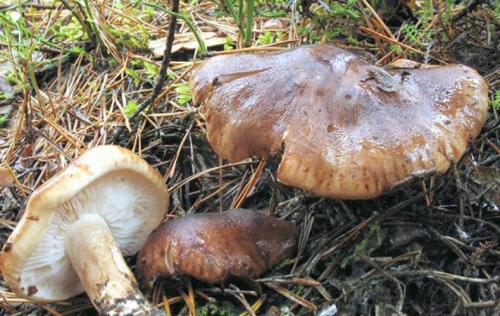

- the white ridge reaches 8 cm in height, has a flat, open cap with wavy thick edges, turns pink when cut, and a pungent smell of radish.
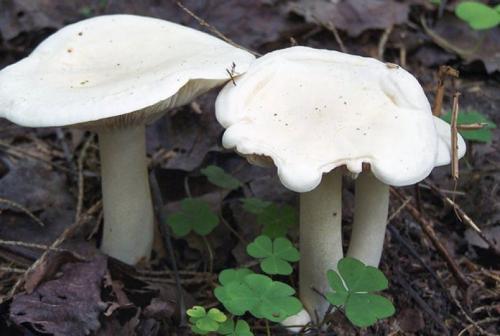

Chemical composition
This product is useful - it contains fiber, glycogen. It is rich in macro- and microelements: potassium, magnesium, phosphorus, sodium, chlorine. There are also vitamins (A, D, group B).
What can be cooked from them
The sandpiper is versatile in preparation - pickle, boil, salt, dry, fry. The only condition is to prepare this mushroom.
A kind of underfloor
Strictly speaking, there are no types of underfloormen. There are more than 2500 species of the common family. Here are some of them and are considered varieties of the same mushroom. Rows can be taken for a sub-floor:
Since these species have a similar growth mechanism (almost underground), they are often mistaken for subfloor varieties. The fact that the places of growth, the description and photos of these mushrooms do not coincide with the sandpipes, few people care. Maximum, will be called a false sandpit / row.
Most likely for the appearance. But the Valui has nothing to do with the ordinary ones: this is a family of russula. In the photo, not one of the types of floodplains, but Valui. He's a bull. It is enough to cut off the fruit body to understand the difference: the ryadovka has a dense leg, while the valuy is hollow.
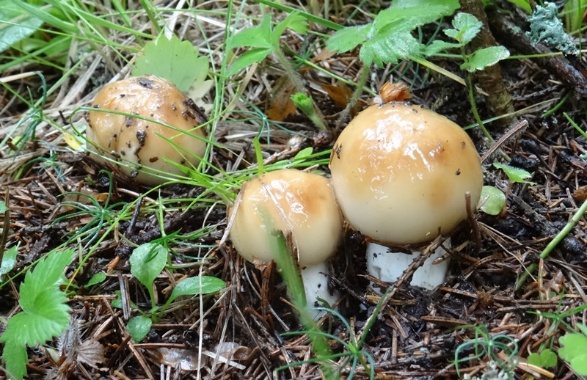

Subtopolniki: how to pickle for the winter
Consider another way to cook these mushrooms. For this recipe we need:
- Mushrooms - 8 l bucket.
- Salt - 2 tablespoons
- Water - 3 liters.
For brine:
- Water - 1.5 liters.
- Salt - 3 tablespoons
- Sugar - 2 tablespoons
- Black pepper - 10 peas.
- Vinegar essence - 1 tsp per liter jar.
Let's start the preparation itself:
- After three days of soaking, wash the mushrooms, peel and cook.
- They should be in boiling water for at least 45 minutes.
- Prepare jars - wash and sterilize.
- Cook the brine. It includes all of the listed ingredients, except for vinegar. It should boil for 10 minutes.
- Put podpolniks tightly in jars, salt, fill with brine. Add the essence in the required amount - to a half-liter jar - 0.5 tsp, to a liter jar - 1 tsp. Roll up the lids.
Turn the jars over to check for leaks, cover with a blanket. After a couple of days, put them away for storage, which can last up to two years.
During cooking, the volume is greatly reduced. So, only 2.5 liters of spins will come out of an 8-liter bucket of underfloor heating. Fresh mushrooms are easier to peel, so this can be done before soaking. In old mushrooms, in addition to the cap, the lower plates also need to be cleaned. Check carefully the quality of each of them - they should not be wormy or damaged.
What false underfloors look like
Since in fact these are just representatives of the same Tricholomaceae family, edible and even more valuable mushrooms are often called false podpolniks. At the same time, "false sandpipers", even in the photo, cannot be confused with poplar rows. In nature, however, it is almost impossible if you know to which type of tree this or that type of trichol is "attached".
Edible ordinary
For false floodplains, they take quite valuable mushrooms that generally grow either under birches or in coniferous forests. An inexperienced mushroom picker can be scared away by the adjective "false" from several edible and tasty rows:
The latter is considered a delicacy in Japan, and almost all of them have been destroyed.
Gray row (Tricholoma portentosum)
- little mice;
- sub-base;
- sirushka;
- the row is streaky.
It differs from poplar in the gray color of the cap and the species of trees necessary for the mycelium. Forms mycorrhiza with pine. Grows in coniferous and mixed forests. Like poplar, it loves sand. Can be found together with green tea.


The fruiting seasons of mice and poplar rows coincide in September-October. But in the south of Russia, the gray hat grows up to frost and is never found under poplars.
A good video of a forest, where there are no floodplains, but there are many gray rows.
Green row (Tricholoma equestre)
Grows on sandy soils in coniferous forests. Mixed "likes" less, but also occurs. Caught one at a time or in small groups of 5-8 fruiting bodies. The fruiting season is from September to frost. Common mushroom in the Northern Hemisphere.
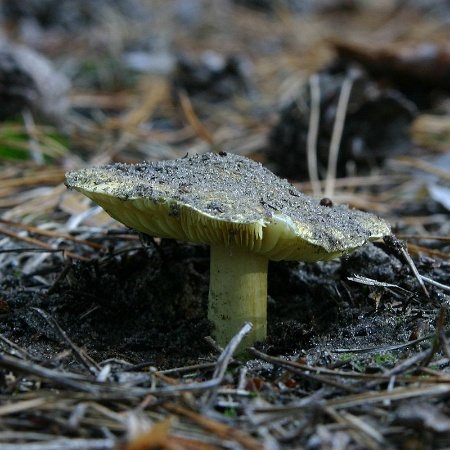

Crowded row (Lyophyllum decastes)
It does not belong to Tricholomovs. This is a representative of the lillophilum family. But some of the species of this family are also called ryadovki in everyday life. Synonyms for the names group ryadovka and crowded lyophillum.
Young poplar and group rows can be confused. They have a similar shape and color. But lyophyllum is smaller in size. There is nothing wrong with confusion, since both are edible.
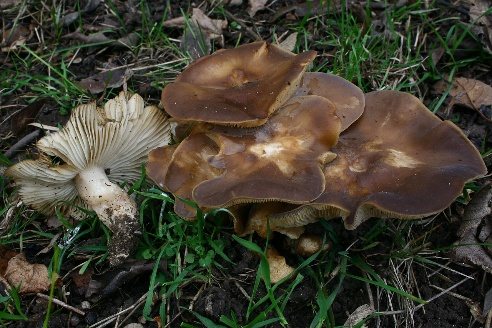

Matsutake (Tricholoma matsutake)
There are no synonyms. In Japanese, the name means "pine mushroom". Grows in symbiosis with conifers. The main condition for the survival of this species is poor soil. In the case of improving the quality of the soil, a large amount of rotting organic residues, the fungus dies.
Read also Applique stocks for the winter
Distributed in the northern regions of Eurasia and America. It is imported to Japan from Scandinavia and Finland.
Outwardly, matsutake is very similar to poplar ryadovka, but it differs in smell and taste. Depending on the region, the aroma of the mushroom is either pine or cinnamon-like.
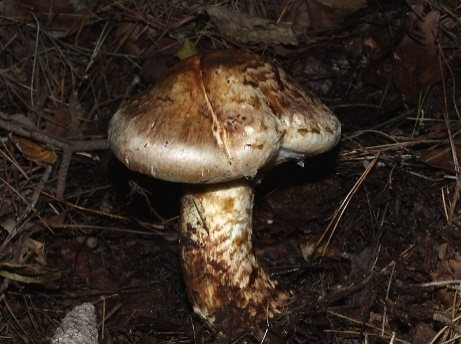

Inedible rows
Among the true rowings of the genus Tricholum, there are relatively few of them. But the genera of talkers and mushrooms also belong to the Tricholomov family.
In the latter, false honey is best known. Among the talkers there are many poisonous species, but they differ from the real rows in their concave caps. It is difficult to confuse talkers with edible rows.
But even among the tricholas there are poisonous species. Most similar to the poplar ryadovka spotted. Leopard still needs to be confused with other types of mushrooms besides fly agarics.
Spotted row (Tricholoma pessundatum)
Second name: ruined. Weakly poisonous mushroom. May cause poisoning if confused with edible rows. Dangerous in that it is very similar to poplar. The hat is brown, the smell and taste are mealy, like that of the underfloor.
The fact that this mushroom also grows in forests with conifers saves from poisoning. Near poplars can only be found if pines, spruces and other similar trees grow nearby. Grows throughout Eurasia and North America. Fruiting season from September.
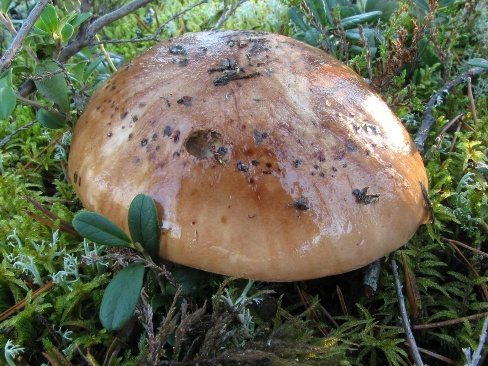

Leopard row (Tricholoma pardinum)
She is tiger and poisonous. It is easy to confuse it with a serushka, but not with a sub-field. Poisonous ryadovka hat in different gray color options. Leopard or tiger ryadovka is named for the characteristic pattern of the cap, formed by the skin bursting during growth. The network of cracks resembles leopard spots or tiger stripes.
Grows in coniferous and beech forests, preferring calcareous soil. Rare. Distributed in the Eurasian and North American continents. It is quite rare. Fruiting season in August-October.
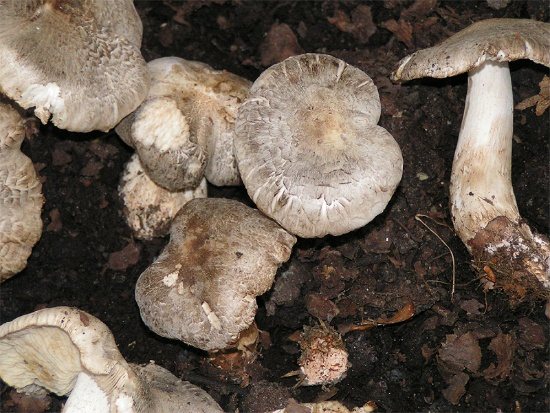

Rules and places of collection
Experienced mushroom pickers always adhere to the basic rules of mushroom picking. They consist of the following items:
- You can pick mushrooms only in ecologically clean areas. It is better to stay away from highways and industrial facilities.
- Before collecting, it is necessary to carefully study the appearance and features of the rows, so as not to confuse them with inedible doubles.
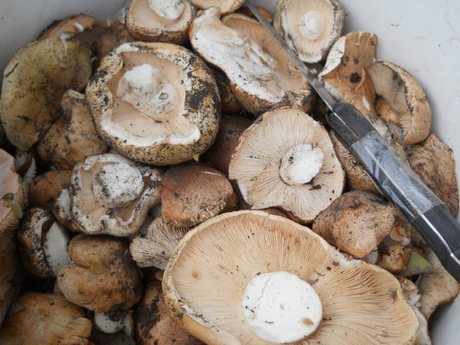

Mushroom picking - The harvest is collected in baskets and boxes.Cellophane bags cannot be used.
- To save time and space in the basket, the mushrooms found are immediately examined for worminess.
- The most optimal time of day for mushroom pickers is morning, when dew drops sparkle on the caps.
- The underfloor panels must not be torn, they must be cut off with a sharp tool, preferably a knife. A broken place in the mycelium can ruin the entire mushroom family.
- Even experienced mushroom pickers never put a mushroom in a basket that has caused even the slightest doubt.
It is better to collect underfloor cars young. This species is characterized by hyperactive absorption of elements from the external environment, therefore, fruit bodies in old individuals can be toxic. You can find poplar rows under the poplars. Mushrooms always grow in large groups and in a row. However, it is sometimes difficult to look for them, because the rowers tend to hide under the fallen leaves and bury themselves in the soil.
The benefits and harms of underflood mushrooms
The main benefit from poplar tricholas is received by the pharmaceutical industry. They are used to make antibiotics that can fight Koch's bacillus. Poplar trees are rich in vitamins A, C, B. But how much a person is able to assimilate these vitamins is unknown. There is an opinion that mushroom pulp is poorly absorbed by the human gastrointestinal tract and comes out practically unchanged. But even in this case, the benefits are undeniable: mushrooms stimulate the intestines.
There is also another belief: poplar rows can replace meat. But this opinion applies to the entire department of Basidiomycetes. And the obstacle is the same as for vitamins: the human gastrointestinal tract is not able to break down and assimilate fungal cells. But if this somehow succeeds, then yes, the meat can be replaced.
The harm from poplar rows is no more than from other edible mushrooms: they are able to absorb harmful substances from the environment. The underfloormen collected along the road can be seriously poisoned. Any higher mushrooms are considered heavy food. In case of overeating, the following are possible:
- flatulence;
- pain and heaviness in the stomach.
Poplar rows are no exception, so they should not be abused either.
How much to soak floodplains
The cleaned and washed poplar row must be soaked in water for a long time. This will rid the mushrooms of dirt residues and deprive them of the harsh taste of the pulp.
The prepared rows should be folded into a wide container and filled with cool clean water. If the mushrooms have been heavily contaminated or there are suspicions that they may be spoiled by worms, the water should be salted. It is recommended to place dishes with podpolnikov in a cool place and keep for 2-3 days. You need to change the water at least a couple of times a day.
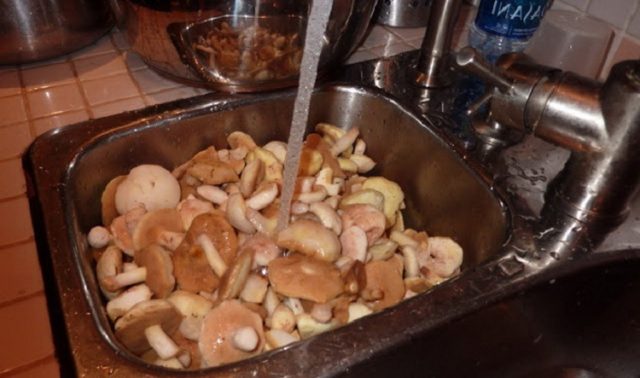

Cleaned and washed podpolniki must be soaked for 2-3 days in cold water
Important! Ideally, the water temperature for soaking poplar rows should not exceed 16 ° C. However, if you cannot keep the water cool enough, you should change it more often, otherwise the mushrooms can turn sour and deteriorate.
Poplar rows can be considered sufficiently soaked if their caps have acquired tangible elasticity and do not break when pressed with fingers.
How to properly wash and soak floor mats, demonstrates the video
Rules for collecting poplar row
When collecting sandpipers in an artificial poplar strip, you need to pay attention to the remoteness of busy roads. You need to go deep into the forest at a distance of at least half a kilometer. If the collection takes place in windbreak strips, then you will have to leave 1-1.5 km from the road, since harmful substances spread further over the fields.
It is better to collect the poplar variety of rows on a cool day after the last rains. Then you can get a really big harvest. You need to take only young fruiting bodies. They have a pink hymenophore and unopened caps.
If you find an old specimen, it makes sense to carefully examine the area around.Most likely, whole groups of young poplars are hiding under the soil nearby.
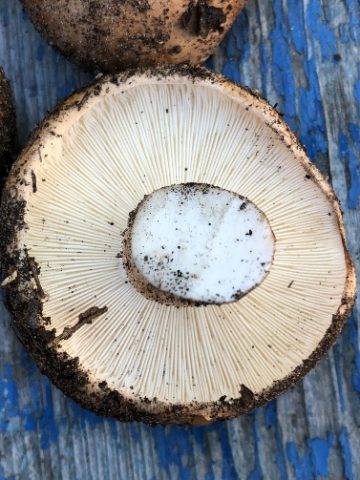

Growing
Poplars can be easily grown in a garden plot. To do this, you need to perform a number of actions:
- Buy mycelium in a specialized store or prepare material from the caps of overripe mushrooms collected in the forest. They are immersed in water, left for a day, then crushed into gruel.
- Next, you need to prepare a good substrate. They use different components - straw, coffee grounds or sawdust of deciduous trees.
- In the area under the poplars, remove the top layer of soil about 10 cm thick, lay a nutrient mixture mixed with mycelium in a 2: 1 ratio.
- At the end, sprinkle with warm water.
The success of such cultivation depends on a stable temperature regime, which should remain in the range of 18-19 ° C. After two weeks, the bed is sprinkled with a layer of the garden soil removed before this. Another layer of a mixture of substrate and mycelium is placed on top. The best time to plant mycelium is May.
The first crop will appear in 20 days. After each collection, the soil is poured with a layer of 5-6 cm. When the street temperature drops to 5 ° C, they begin to insulate the beds - they are covered with burlap or agrofibre, and they are covered with straw or fallen leaves on top. The thickness of the covering material should not be less than 10 cm.
Some grow these mushrooms indoors - in a basement or cellar. But this method is more laborious, since it is necessary to equip good ventilation, lighting, humidity at the level of 70-80% and stable heat - 20-22 ° C, which requires serious material investments. Growing will require heating in winter and cooling in summer. With this method, the first fruiting bodies can be obtained only 4 months after the laying of the mycelium.
> Recipe for the winter: pickled podpolniki
Eating poplar mushrooms
Conditionally edible poplar rows cannot be used to prepare meals immediately after harvest. They are pre-soaked for at least a day in cold water. This helps to cleanse young fungi of soil particles and remove bitterness.
The water should be no higher than 16 ° C so that the harvested crop does not ferment. For better removal of bitterness and good washing, poplar rows are periodically stirred and water is often changed. Another way to reduce the bitter taste is to remove the skins from the caps.
After soaking for 1-3 days, boil the poplar rows and drain the water. After all excess water drains from the boiled mushrooms, the semi-finished product is ready for use.
The poplar row is universal. You can:
Pickled and salted are used for making salads and as an appetizer. Can be used in any mushroom recipe.
How and how much to cook the rows until cooked
Regardless of which way of storing the mushrooms was chosen, they must be treated in a special way. Rows are thoroughly cleaned and washed under running water.
How to cook rows? This process is carried out in several stages:
- Cold water is poured into a spacious container. Salt is also added here. To determine the amount of liquid and salt, use the following formula: 1 liter of water + 1 kg of mushrooms + 1 tbsp. salt. You should also add about a quarter of a teaspoon of citric acid to the water - it will act as a preservative. To stir thoroughly.
- As soon as the water boils, pour the mushrooms into the pan.
- After 10 minutes add black peppercorns, bay leaves, dry cloves.
- After the mushrooms are cooked, they are discarded in a colander. Once the moisture has completely disappeared, you can proceed with further cooking.
How many rows to cook until cooked? This will take about 20 minutes. The fire should be medium. The container must be closed with a lid to prevent mushrooms from floating.
Reviews of the poplar row
Our poplar ryadovka is almost the only mushroom that can be harvested in large quantities. There are no forests, there are only fields around with the same windbreaks. Poplars were planted then because they grow quickly. In season, underprivileged people go to all dishes. But it is better to process it immediately after returning home. And large containers are needed for soaking.
In our village they are dried, pickled and salted. It is undesirable to freeze because of the earth. Then you can't remove it from the frozen row. After defrosting, the mushroom tissues are damaged and spread.
We were tempted to go for the poplar rows. You still need to eat something, but they were told about them that they were very good. And you can type quickly and a lot. I don't know, maybe we did something wrong?
We typed really a lot and quickly. But when it was cooked ... these mushrooms had a very strange taste. Not bitterness, which could be understood, but as if the soap was full. Fragrant dressing. Well, maybe they really didn’t poplar, but some others. Then it’s good that we didn’t get poisoned.
The photo and description of the poplar row shows a simple-looking and very productive mushroom that is found in any place where poplars grow en masse. Proper preparation provides the product with an exquisite taste that gourmets compare to truffle. Knowing where to look and how to properly handle poplar mushrooms, you can get an unlimited amount of delicious delicacies and prepare a treat for the winter.
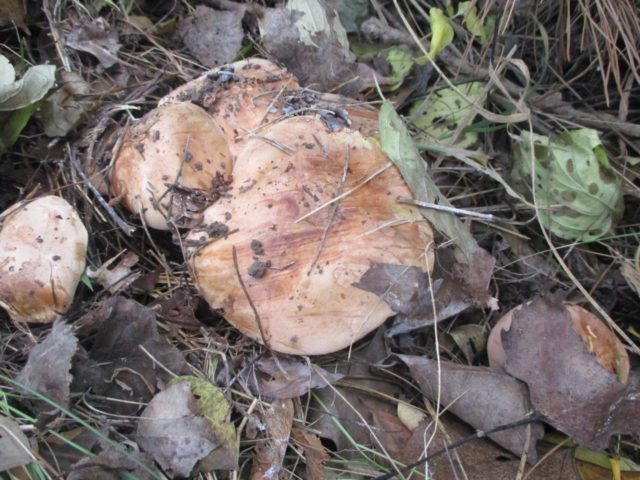

Cooking options
Dishes prepared from the underfloor are considered healthy and tasty.
Salting
Boiled mushrooms are salted using fifty grams of salt per kilogram of product and spices. As spices, for example, horseradish, garlic, onions, dill umbrellas are suitable. Mushrooms are placed under pressure in a prepared container. In a week, the product will be completely ready.
Pickling
Boiled for the first time for twenty minutes, the podpolniki are boiled again for forty minutes in new water. One and a half liters of marinade is enough for a ten-liter bucket of mushrooms. The marinade is prepared according to the following recipe: sugar, spices, salt, dill and lavrushka leaf are added to boiled water. For fifteen minutes, the broth is boiled, the vinegar essence is poured, after five minutes it is removed from the heat.
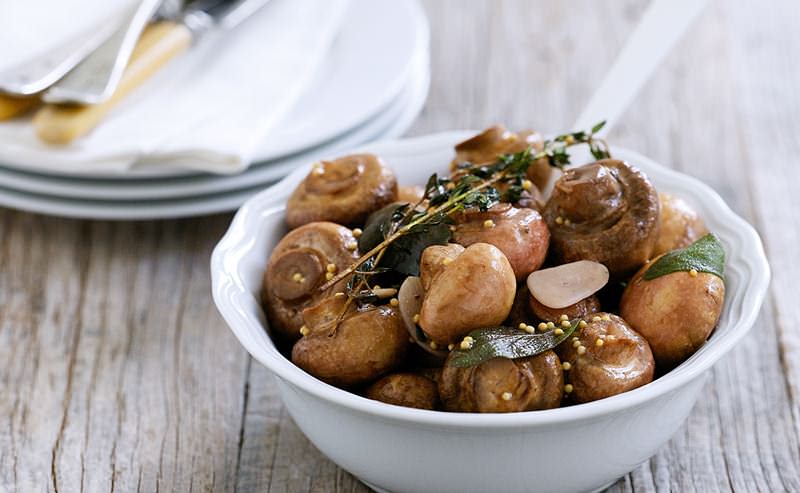

Dishes prepared from the underfloor are considered healthy and tasty.
Banks are sterilized for fifteen minutes, nylon lids - for three to four minutes. Under the banks, the floodplains are packaged, laying them with their hats down. Marinade is poured to the brim of the jar. After that, the containers are closed and the cooled jars are removed to the refrigerator. After thirty days, the mushrooms are completely ready for consumption.
Frying
The fried ryadovka poplar is similar to the exotic truffles that grow in French territory. Mushroom pickers have a chance to taste an exquisite dish at home for almost free.
Prepared mushrooms are cut into strips, salted and fried in vegetable oil until the liquid evaporates. After that, spices and flour are added to the mushrooms and fried again until a golden crust forms.
Some cooking secrets:
- Underfloor heating does not go well with a lot of butter or cream. For this reason, it is advised to exclude butter and cream from recipes in which mushrooms play the main role.
- It is not recommended to come up with tricky recipes using a poplar row, so as not to overshadow the exquisite taste of the mushroom.
- Rows are served on the table elastic; they should not be cooked to a state of excessive softness and gruel formation.
- The taste of podpolnikov will overpower the taste of any other mushroom, therefore it is not recommended to mix them with chanterelles and porcini mushrooms.
What does a poplar ryadovka mushroom look like?
Podtopolnik is the popular name for poplar (poplar) ryadovki, common mushrooms from the extensive family of ryadovki.In different areas, the culture was named sandpiper, zabaluyka, frost in accordance with the peculiarities of development and favorite habitats. The prefix "ryadovka" in the name characterizes the tendency to group growth. Mushrooms are always found in large families, arranged in rows or circles around poplars.
Young specimens have a convex cap that is close to hemispherical. It then grows and unfolds, reaching 9 to 18 cm in diameter. The adult cap becomes flat, in older specimens it is depressed in the center. The edges are uneven, sometimes wavy or cracked. The color of the cap is from yellow to red-brown, characterized by the obligatory presence of pink shades and fades towards the edges. The surface is smooth, without scales.
Read also New Year felt felt pattern
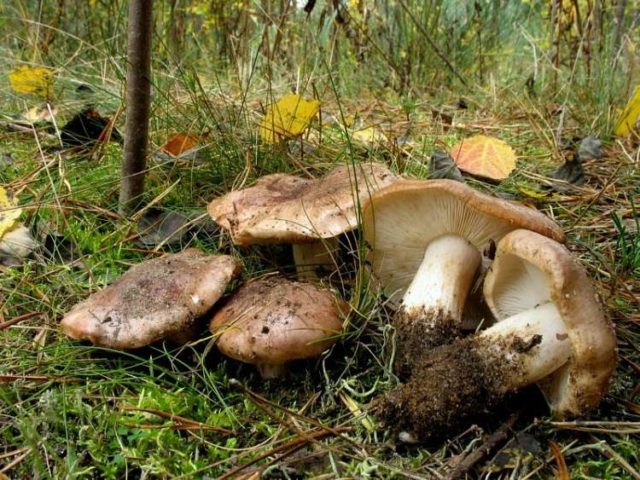

The plates under the head of the row are pinkish or snow-white, darken over time, acquiring a brown tint. The stem of the poplar variety is thick (up to 5 cm in diameter), fleshy, creamy white, slightly widening towards the base. An adult mushroom reaches 8 cm in height.
A feature of the poplar species is the ability to go through the entire development cycle without appearing above the soil surface. Often, mushrooms only raise the sod, remaining in the ground along with the caps. Filled with fallen leaves, the families reveal themselves only as loose bumps under the trees. Having found one mushroom, you can confidently look around - poplar rows never grow alone.
Poplar ryadovka, how to cook. Ryadovka poplar mushroom, preparation, 4 recipes for delicious dishes
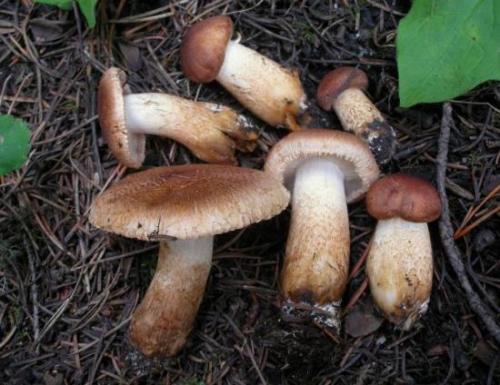

The main advantage of the ryadovka poplar mushroom is the ability to prepare dishes from it that have a surprisingly pleasant smell and taste.
Salted and pickled preparations from this species retain its natural aroma, similar to the smell of fresh cucumber and flour, and fried poplar trees resemble the taste of truffles.
Let's find out more about the common poplar mushroom and the preparation of dishes from it.
- minerals - phosphorus, selenium, calcium;
- acids - oxalic, tartaric, citric;
- natural enzymes that can break down and prevent the accumulation of fats and glycogen;
- vitamins of group B, vitamins A, PP, C.
- These substances speed up metabolism, normalize cholesterol and blood sugar levels, increase appetite, and have a positive effect on blood pressure and the work of the digestive tract.
Mushroom ryadovka, description
Poplar mushroom is not the most popular prey for mushroom pickers. Many lovers of "quiet hunting" do not take it, considering it conditionally edible.
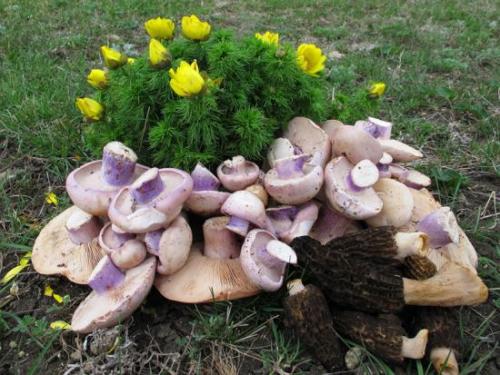

The reason for this is the property of the fungus to absorb dirt and harmful impurities from the atmosphere. It is worth abandoning poplar glades growing near roads located at a distance of less than a kilometer from settlements.
The collection of safe poplar rows is carried out in remote places. They are most often found on sandy soils under poplars, aspens, nuts and in pine forests.
They grow in groups, forming rows or rings. If one specimen comes into view, then for sure you can find a whole clearing of its fellows around.
The people and reference books have many different names: poplar, sandpiper, frost, zabaluika, underfloor and sandstone.
The poplar can be recognized by the shape of the hat. This part of the young underfloor has a hemispherical shape; over time, it turns into a depressed one and becomes covered with cracks.
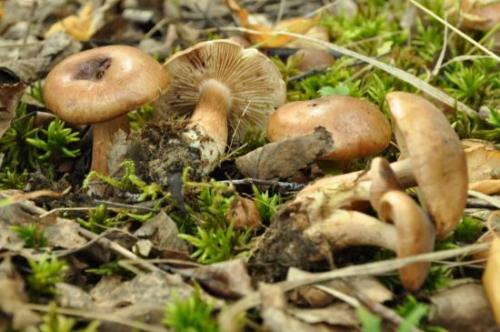

Color - brown with yellowness, gray, brick red. The pulp has a reddish tint with a powdery sweetish taste.
Poplar blades are thin, frequent. The color of young plates is white, cream and pinkish. In the old specimen, the plates are covered with reddish spots.
The leg is in the shape of a cylinder with a scaly surface. Leg size: 1-4 cm in diameter and 3-12 cm in length.
When searching, it will be useful to arm yourself with a stick in order to stir up the foliage, under which the rows like to hide.
Due to the peculiarities of their growth, they are heavily stained with earth and decayed leaves. Therefore, before cooking, it is necessary to clean the underfloor with a brush.
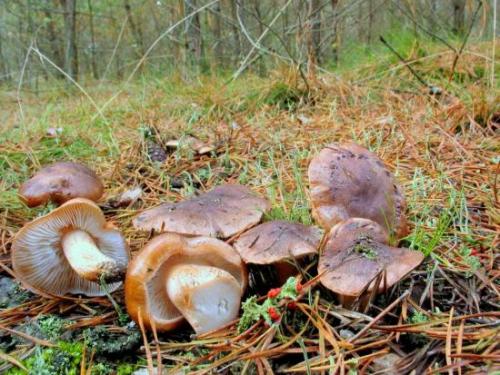

Podtopolnik contains useful vitamins and minerals:
Official pharmacology uses the enzymes contained in poplar pulp in the production of drugs for tuberculosis.
Where does the poplar row grow
Podpolniks grow in large families, can appear around poplars in parks, forest belts, along roads, ravines, near ponds. For several years, the population is able to occupy a whole clearing near the trees. The poplar species prefers dry, loose soil, most often their mass distribution is observed on sandy soils.
The natural habitat of poplar rows is North America, Canada, all of Europe and Central Asia. Rows grow on the territory of Ukraine, Belarus, in the south of Russia, in the middle lane to the very Far East.
Blue mushrooms. Blue-footed mushroom or lilac-footed row.
Among the numerous family of rowers, there are some varieties that are memorable and unlike anything else. These include the lilac-footed ryadovka.
It is also called: blue-legged, blue root, two-color ryadovka, lilac-legged lepist. This is an edible mushroom of the genus Lepista, of the family of ordinary ones.
WHAT IT LOOKS LIKE:
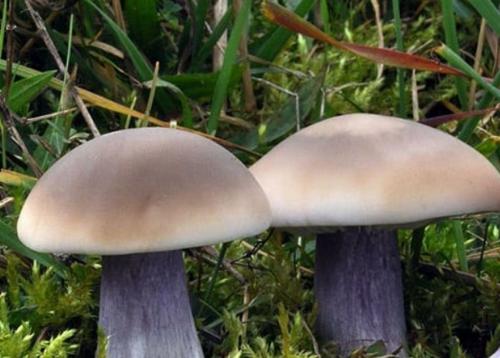

Hat: Up to 17-20 cm in diameter, cushion-shaped, smooth, yellowish-beige with a purple tint.
Plates: frequent, loose, wide. Their color is yellowish or cream.
Leg: Up to 10 cm long and up to 3 cm in diameter. Interestingly, its appearance changes with age. In young mushrooms, the fibrous structure of the stem is discernible, covered with flakes (remnants of a private blanket). In adult mushrooms, it becomes smooth. Its color, almost like that of the cap, is grayish-purple, but sometimes it can be bluish.
Pulp: in young mushrooms, it is dense and thick, becoming more loose with age. Its color can be light purple, grayish or gray-purple with a mild sweetish taste and light fruit aroma. But not everyone likes it! It is unusual to somehow taste mushrooms with a fruity aroma!
WHERE IT GROWS:
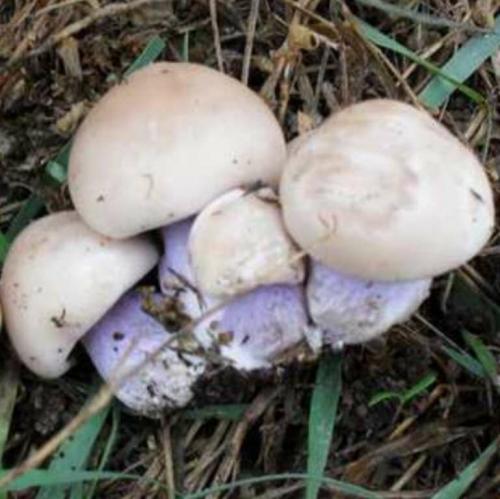

Bluefoot is very fond of soil with a high humus content, therefore it often grows near grazing areas and human habitation, on old heaps of manure and compost. It is often found in forests, preferring deciduous ones.
These mushrooms bear fruit in large families, in rows. They often form "witch's rings" of impressive size. In the southern regions of Russia from early May to November. In the middle lane, they grow, most often, only in the autumn period.
Row-legged mushrooms are very resistant to cold weather. Their vegetation can continue even when other mushrooms are no longer found. They can withstand even light frosts up to 3-4 degrees.
Edibility:
It is quite an edible mushroom of the 4th category. It can be salted, fried and pickled. Some gourmets claim that pickled mushrooms taste like pickled mushrooms. I can neither confirm nor deny this. I didn’t have to eat pickled rows!
THANKS TO ALL WHO READ!
Taste qualities of poplar ryadovka mushroom
In terms of nutritional quality and consistency of pulp, poplar ryadovka belongs to the fourth (sometimes third) category. This is how mushrooms are classified without outstanding flavor. But those who collect and prepare the poplar variety argue that a properly prepared product has a delicate nutty flavor and is comparable to gourmet mushroom dishes.
Fresh and cooked poplar rows smell like wheat flour with a slight fresh hint of anise. Immediately after harvesting, the pulp is tart, sometimes with a sharp taste, which can be easily eliminated by additional processing. The bitterness of poplar mushrooms is not poisonous.
What to do with the underfloor
Freshly picked poplar rows will successfully serve as the main ingredient in the first or second courses. But before that, they must be properly and competently prepared.
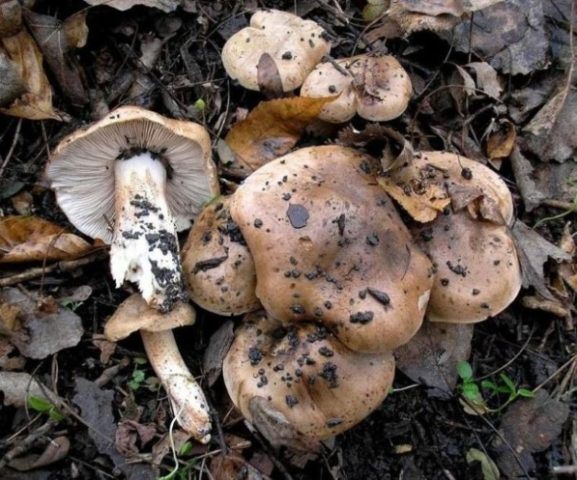

Freshly harvested rowing needs to be well cleaned and rinsed
The preliminary processing of the poplar row is as follows:
- first of all, the mushrooms are sorted out, cleaned of twigs, moss, fallen leaves or pine needles;
- clean the specimens selected for further use;
- the poplar rows are washed several times in a large amount of water, paying special attention to the plates under the hat, where dirt and sand usually accumulate in abundance;
- the floodplains are soaked for 2-3 days;
- must be subjected to heat treatment, boiling in salted boiling water for 20 minutes.
Some stages of preparing poplar rows for eating should be given more attention.
The benefits and harms of poplar rowing
The calorie content of poplar depends on the fertility of the soil, but never exceeds 22 kcal. The dense pulp is close to meat in terms of the composition of amino acids and other useful substances, it is highly valued in the vegetarian menu, used in dietary nutrition, for diabetes.
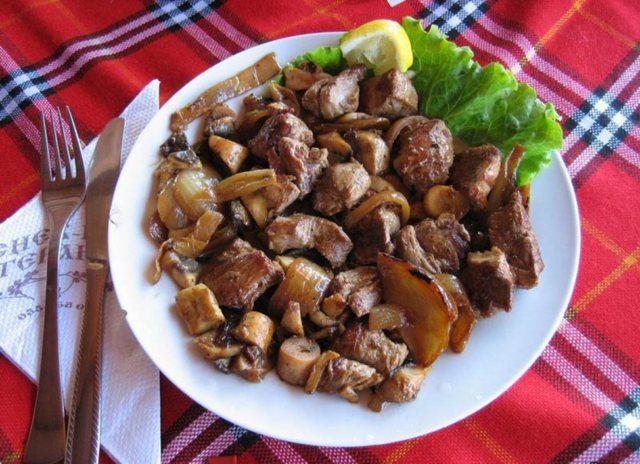

The rich composition includes such vitamins and mineral compounds:
- the entire vitamin range of group B;
- D2 and D7;
- A, C, PP, K;
- Calcium, Phosphorus, Potassium;
- iron, copper, manganese.
Poplar rows contain such rare compounds as zinc and selenium, more than 10 different polysaccharides, natural antibiotics, plant enzymes.
Beneficial effect on the body:
- Antibacterial, antiviral, immunomodulatory.
- Normalizes heart rate, lowers blood sugar and blood pressure.
- Tonic effect on the central nervous system and gastric secretion.
- Activating the elimination of toxins and regenerating the liver.
- Strengthens the vascular wall, cleans the bed.
The toxicity and allergenicity of the poplar row depends on the chemical purity of the environment where it grows. The pulp of the culture intensively absorbs pollution from soil, water and air. First of all, radicals of heavy metals (tin, mercury, cadmium, pesticides) accumulate. Such specimens may not be beneficial, but harm to the body.
Poplar mushrooms are used with extreme caution in the following conditions:
- chronic disorders in the digestive tract;
- dysfunction of the gallbladder;
- gastritis, stomach ulcer;
- pancreatitis;
- cholecystitis.
Excessive use of poplar rows provokes mild diarrhea, flatulence, stomach cramps, heaviness in the right hypochondrium. Sometimes there is an individual intolerance to the product.
Useful properties of the mushroom
Chemical analyzes of the rowers and the study of their biological composition have established that they have a wide range of medicinal properties:
- antibacterial;
- antivirus;
- immunostimulating;
- anti-inflammatory.
- Systematic application of the product contributes to:
- cleansing the body, getting rid of toxins, toxins and harmful substances;
- normalization of the digestive system;
- renewal and restoration of liver cells;
- healing wounds and ulcers;
- activation of the protective functions of the body;
- rejuvenation of the skin.
Described mushrooms it is recommended to include in the diet for diabetics, cancer patients, people suffering from arthritis and rheumatism, urinary tract diseases, nervous disorders... In addition, the product is low-calorie, so it is great for those who want to lose extra pounds.
When to collect poplar rows
The formation of fruiting bodies begins in August and lasts until October. The appearance of the first mushrooms is monitored by leaf fall. As soon as the first leaves fall off the poplars, they begin to search for young rows. Their appearance is evidenced by loose mounds at the base of trees, which are raked with hands, where whole families of the first mushrooms are found.
Fruiting continues even after the first frost. The sod layer, loose soil and foliage protect well from the autumn cold. Therefore, the collection of poplar species is carried out before the first snow. Experienced mushroom pickers go for "Russian truffles" until the end of November.
Growing methods
Poplar rowing is harvested in natural conditions from late summer to mid-autumn. But for industrial production, this method is not very suitable - too much dependence on unpredictable weather conditions and the spread of myceliums. Therefore, it is better to grow it artificially.
There are two ways to grow poplar trees - outdoors and indoors. The first option is technically simpler, although it depends on the air temperature. The fact is that the fruiting bodies of the fungus begin to set at temperatures below 15 degrees. Such a temperature regime can be stably provided only in basements and cellars. But the open method is cheaper, and the area of planting the mushroom culture can be as large as desired.
The cultivation process should begin in May, when bags or boxes with a substrate consisting of peat, soil for plants or plain earth are laid on the beds. Substrate composition:
- soil - 5 kg;
- chalk - 100 gr;
- water - 1 l;
- mycelium - 50 g.
The soil, chalk and water are mixed with each other, mycelium is added there. The resulting mixture is thoroughly mixed and laid out in a box or bag, then covered with a film and provided with increased humidity and air circulation around the edges.
The substrate is placed in a damp, dark place after the mycelium covers the ground, and the film is first removed. The best temperature for mycelium growth is 20 degrees Celsius.
When 4-6 weeks have passed since planting, the first few fruiting bodies are formed. From this moment, the first harvest begins.
After collecting the mushrooms, each time you need to water the ground, or, more desirable, add a layer of damp earth with a thickness of 2 to 5 cm.When frost approaches, the mycelium is covered with straw, grass or leaves, and so it survives the winter. They remove the insulation in the spring, when a stable temperature is established at least 10 degrees Celsius.
How to distinguish poplar rows
The family has more than 2 thousand species, some of them are poisonous. They distinguish edible underfloor on several grounds:
- the pulp exudes a fresh flour smell, some describe the aroma as cucumber;
- the poplar row is found only under the poplar and does not grow in other places;
- the color of the edible variety is pale, but never completely white;
- podpolnik has no tubercle on the cap in the center.
You can confuse poplar ryadovka with a chanterelle or crowded ryadovka, which is not dangerous, since the mushrooms are not poisonous. The edible species should be distinguished from the false poplar row shown in the photo.
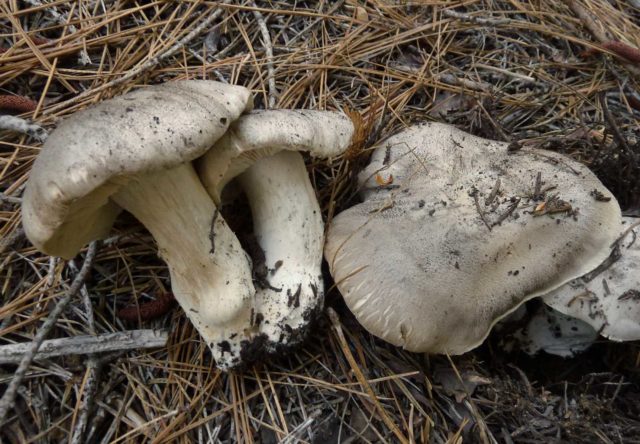

The cap of such a mushroom is fleshy, the flesh is translucent, pale, the smell is musty. It is more dangerous to confuse poplar with a poisonous tiger species: its pulp does not have a repulsive taste and smells like fresh flour. But the cap is easy to distinguish by the dark scales arranged in stripes.
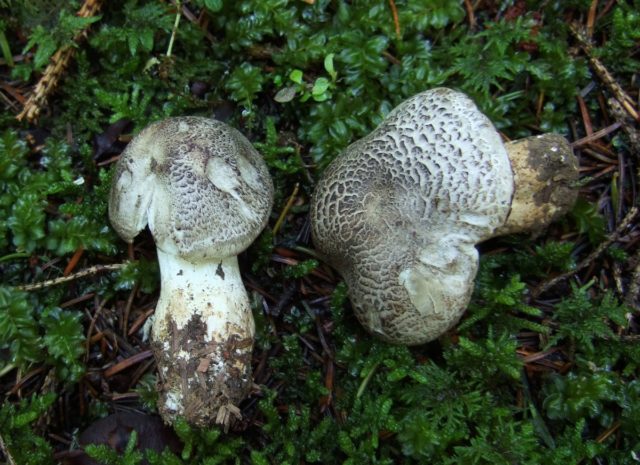

Similar species
These mushrooms are a bit like representatives of another related species - Crowded row... However, the similarity is observed only in young mushrooms. In addition, Poplar Ryadovka has a large size and a bitter taste.
She also looks like a poisonous Tiger row.
From which it is reliably distinguished by 2 signs:
- The edible mushroom always grows in large families.
- It settles next to poplars, which is why it got its name.
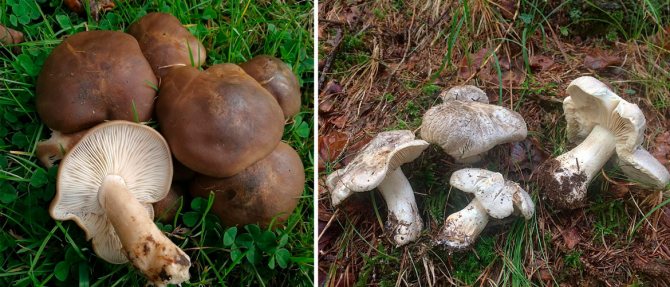

1-Row crowded 2-Row brindle
Preparing poplar rows for cooking
The taste and safety of the cooked mushrooms directly depend on the preliminary stage. Since the fruiting body grows in a layer of sandy soil or forest litter, and the mushroom cap is a little sticky, pollution is always present. Qualitatively peeled poplar rows according to any recipe will be well stored in winter and will not lose their taste.
How to clean a poplar row
To remove all sand, soil particles and leaves, you will need not only a knife, but also a brush. The underside of the cap will also need to be cleaned.The sand remaining between the plates will not only spoil the taste of the dish, but also shorten the shelf life of the blanks for the winter.
Methods and techniques for cleaning a poplar row:
- With a knife, the lower, harsh part of the leg is cut off, the spoiled, wormy places are removed.
- If the mushroom is spoiled by more than 1/3, it is discarded whole.
- For dry cleaning, use a soft brush to remove dirt between the plates. If necessary, peel off the skin on the cap with a knife.
- Facilitates cleaning by wetting the brush and fruit body in sunflower oil.
The best way to remove all impurities is to soak. For quick cleaning, add 1 tbsp for 1 liter of water. l. table salt. In a few hours, all dirt is soaked and can be easily removed with a sponge.
Do I need to soak the poplar row
Water helps not only to qualitatively cleanse the fruiting body of the fungus. The bitterness present in the pulp with prolonged soaking is completely eliminated. The taste acquires characteristic nutty shades, and the fruit body itself loses fragility and becomes elastic. This keeps the caps intact in the finished dish. After soaking, the pulp does not crumble from the imposition of the press in the recipes for salting and pickling poplar ryadovka for the winter.
How much to soak the poplar row
The peeled mushrooms are immersed in cold water for several days. Over the next 2 days, the water is changed as often as possible. This rule is especially true when it is hot. The water temperature should be kept at + 16 ° C, otherwise fermentation will start.
It is determined that the poplar mushrooms are sufficiently soaked for the condition of the caps. When they become elastic and do not crumble under pressure, the soaking is considered complete. This sometimes takes up to 3 days. Long-term presence of mushrooms in water is necessary for the preparation of first and second courses, sauces, marinades. Fermentation does not always require soaking.
How much to cook the poplar row
The next required step is to boil the mushrooms. The poplar row is boiled over medium heat in slightly salted water. It is advisable to accurately measure the cooking time: the minimum cooking time is 20 minutes, if the mushrooms are heated for more than ½ hour, the pulp loses its elasticity.
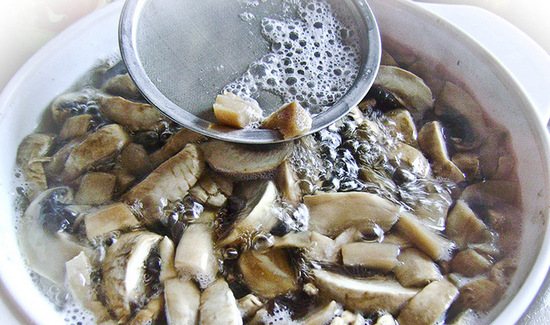

After heat treatment, the poplar row can be simply fried with potatoes, it is ready for use in hot dishes, salads, suitable for pickling, salting. Mushrooms frozen at this stage will retain their consistency and taste after thawing.
Characteristic
Poplar mushrooms are popularly called frosts or zabaluiks. They have a beautiful, compact shape with a straight, erect leg.
The description includes several distinctive qualities:
- at a young age, the cap is rounded, convex, in mature it becomes flat, the maximum diameter is 18 cm;
- at the beginning of growth, the plates are beige or white, later they acquire a pinkish-brown tint;
- the edges of the cap are wavy with a pronounced white border;
- the leg grows up to 10 cm, thickness is 4 cm, in the form of a cylinder, closer to the base is thickened;
- the pulp is fleshy, dense, darkens when broken, exudes a light flour or cucumber aroma. If you remove the skin of the cap, then the flesh under it will be a little reddish.
Beneficial features
Mushrooms have several important advantages for cooking - young specimens with a compact cap, which is very convenient when salting or pickling whole, practically not damaged by worms and have a rich taste and smell.
The only drawback is that they like to hide deep in the soil or fallen leaves, which complicates the process of clearing them from forest debris and earth.
This low-calorie product (25 kcal per 100 g) contains a lot of fiber, vitamin C and trace elements useful for the body - magnesium, sodium, potassium, manganese. Therefore, it is recommended to eat it regularly, especially for those wishing to lose weight.
Contraindications apply to children under 12 years of age, pregnant and breastfeeding.
How to cook poplar rowing
There are several rules for preparing dishes from the underfloor, which can emphasize the delicate smell and create an exquisite taste of any dish.
- The poplar variety does not tolerate a combination with a large amount of fats (animal or vegetable). In any standard recipe, the amount of oil is kept to a minimum.
- Spices are used sparingly so as not to overpower the exquisite nutty flavor.
- To prepare soups, the pulp is thoroughly soaked, boiled, the broth is drained and only then the mushrooms are added to the soup.
- With excessive, prolonged heating, the pulp turns from elastic into a puree-like mass. Do not boil the dish for longer than indicated in the recipes.
Read also Hedgehog DIY craft from seeds
How to pickle poplar row
For the recipe, processed, soaked and boiled mushrooms are used. The easiest and fastest way to marinate a poplar row involves the following set of products:
- prepared rows - 1 kg;
- salt - 1 tbsp. l .;
- sugar - 1 tbsp. l .;
- vinegar - 2 tbsp. l .;
- water - 350 ml;
- garlic - 3 cloves;
- bay leaf - 2 pcs.
At the beginning, a marinade is prepared: water is boiled, salt, sugar, all spices except garlic are added. Cook for 10 minutes. Pour in the mushrooms, wait for the boil and heat for at least another 10 minutes. Pour in vinegar, keep the mixture on fire for 5 minutes. Place the garlic or onion (to taste) in the marinade and turn off the heat.
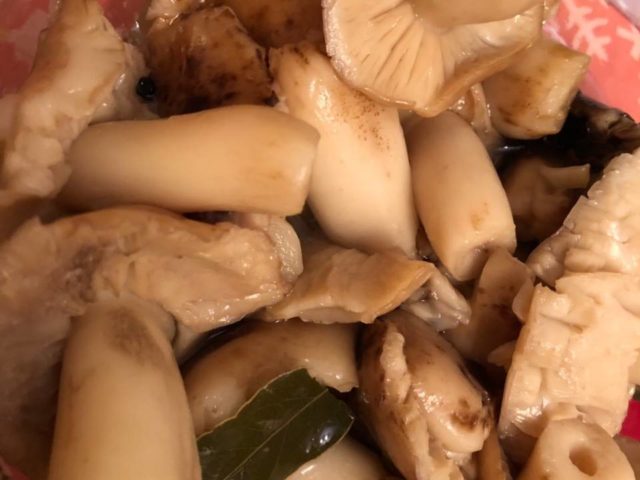

The hot mass, boiled in the marinade, is packaged in sterile jars and rolled up with lids. Poplar trees will be completely marinated after 30 days. For storage, canned rows are removed in a cool pantry or cellar.
How to salt a poplar row
Salting podpolnikov is a very simple way to prepare a tasty and healthy snack. The filling solution is prepared at the rate of 50 g of salt per 1 kg of boiled product. Spices are added to poplar rows at will, observing the measure. The intrinsic aroma of pulp and salt is enough for good taste.
Mushrooms are placed in an enamel container with their caps down, filled with brine, pressed down with a small load. Boiled pulp is salted in a few days. For long-term storage, such canned food from poplar rows requires cold conditions. To protect the brine from the appearance of mold, a spoonful of chopped mustard is poured onto the surface under the lid.
A delicious ambassador is obtained by adding tomatoes. A dish prepared according to this recipe keeps well in winter.
Poplar row in tomato:
- For 2 liters of tomato juice add 1 tsp. salt, 3 tbsp. l. sugar, 50 g vinegar, a few clove buds. Bring the mixture to a boil.
- Garlic cloves, peppercorns, bay leaves are placed in sterilized jars.
- Boiled mushrooms are laid, filled to the brim with boiling juice.
The jars are sealed, left to cool slowly under a blanket. Store in a cool, dark place.
How to fry poplar ryadovka
It is this way of cooking that gives a dish, according to gourmets, reminiscent of a truffle. Nevertheless, there is no special recipe for fried poplar rows.
Boiled mushrooms are cut into strips, fried in a small amount of vegetable oil until the excess liquid evaporates. Then add spices, add a little flour and continue heating, until a golden crust is obtained. At the end, you can add onions, potatoes, vegetables, fried or boiled separately to the recipe.
Pickled poplar ryadovka
A very useful, easy-to-digest product is obtained by fermentation. For fermentation, glucose is needed, but in mushrooms it is practically absent. Therefore, sugar is needed to maintain the process. For 1 kg of prepared pulp, take about 30 g of sugar, twice as much salt is required. Boiled poplar rows already contain a lot of liquid and do not need brine.
- Sugar and salt are mixed with boiled mushrooms.
- Spices of your choice are placed at the bottom of a convenient container: dill umbrellas, celery, currant leaves, garlic, peppercorns, cumin or coriander.
- Rows are shifted into the dishes, and oppression is installed on top.
Depending on the room temperature, but usually after 7-10 days, the product is packaged in jars and sent to be stored in the basement or refrigerator. The final taste of pickled poplar mushrooms can be appreciated after 30 days. This method is called hot salting of poplar ryadovki, since already boiled pulp is fermented.
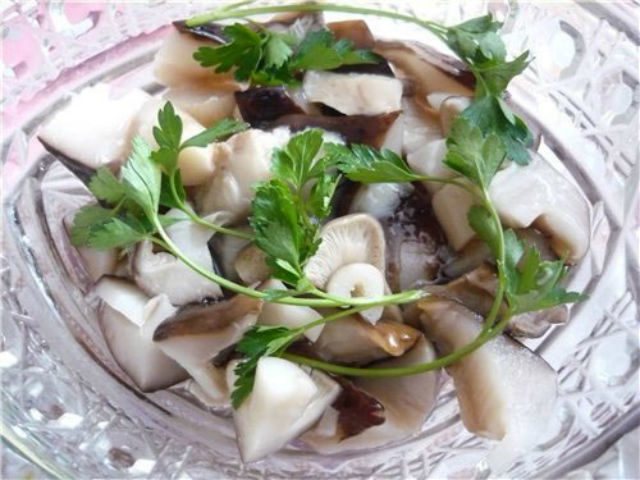

An aqueous solution is used to ferment raw pulp. This is a cold method, the only one for which you do not need to cook rows. Raw soaked mushrooms are placed in containers for fermentation, filled with brine: for 1 liter of water 2 tbsp. l. sugar and 4 tbsp. l. salt. If there is enough liquid, the load is not placed on top.
The dish will fully develop its flavor in 4-5 weeks. Store such blanks for up to 6 months in a cold place.
Salting the rows
Billets of boiled rows can be used for salting. They keep well until spring and longer. They have a pleasant taste and firm crunchy texture.
Each hostess has her own culinary secrets that make her dishes unique. The basis is always a classic cooking recipe.
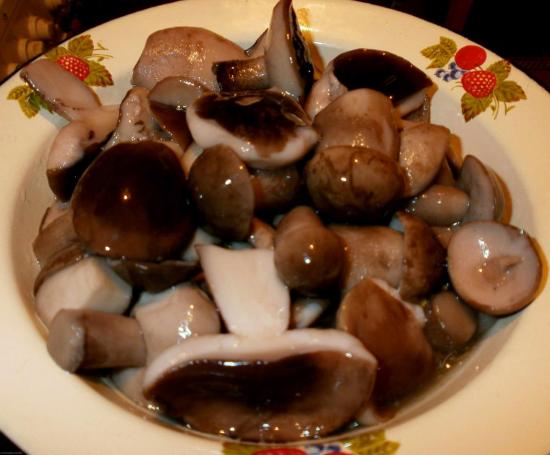

For salting the rows, you need to take the following ingredients:
- 2 kg of boiled poplar,
- 3 glasses of water
- 5 tablespoons of salt
- 10 black peppercorns,
- 3 bay leaves
- 6 inflorescences of a carnation,
- 5 dill umbrellas,
- 6 blackcurrant leaves.
Preparing the marinade:
- all ingredients are mixed in a saucepan and brought to a boil.
The main stage:
- mushrooms are added to the boiling marinade,
- boiled for 15 minutes and laid out in jars.
The remaining space in the jars is filled with marinade to the top and the jars are ordered.
Storage:
- hot cans are turned over with the lid down,
- wrapped in warm material and stand for a day until they cool completely;
- after cooling, the jars are turned over, stored in a cool, dark place.
You can eat pickles 40 days after the day of cooking.
Poplar row (Tricholoma populinum)
Poplar
Sandpiper
Sandstone
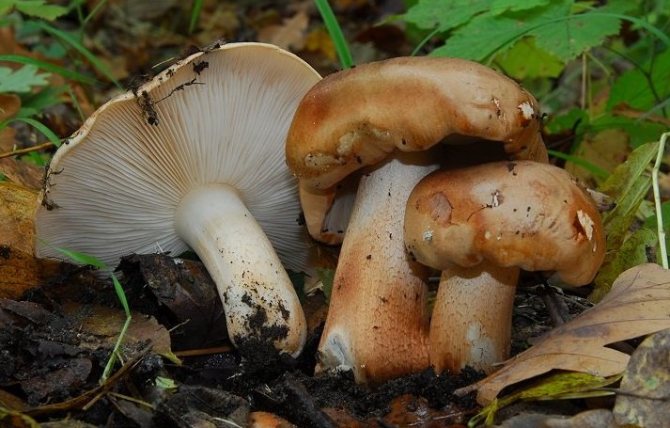

The Ryadovka poplar mushroom belongs to the lamellar mushrooms, which means that it reproduces by the spores in its plates.
Description
LPs at a young age it is white or cream in color, frequent and thin. And, as the fungus grows, they change their color to pinkish-brownish.
Hat at the beginning it has a semi-spherical and slightly convex shape, with thin edges tucked inward, then it straightens and slightly bends, becomes fleshy, in the rain it is slightly slippery, pinkish-brownish in color. The diameter of the cap varies from 6 to 12 cm. Under the skin of the cap, the flesh is slightly reddish.
Leg in ryadovka poplar of medium size, rather fleshy, cylindrical in shape and solid inside, with a flaky-scaly bloom, fibrous and smooth, pinkish-white or pinkish-brown in color, when pressed, it becomes covered with brown spots.
Pulp mushroom is fleshy, soft, white, under the skin it is brownish, with a flour aftertaste.
Spread
Poplar rowing grows from August to October in large groups (whole ridges) under poplars, deciduous forests with a predominance of aspen, can be found in plantings along roads, in parks. Distributed in the European part of Russia, Siberia. The mushroom has a pleasant aroma of fresh flour.
Mushroom Poplar row got its name for its adaptability to grow under poplars and in the immediate vicinity of them, during the period of autumn leaf fall. The poplar ryadovka, at a young age, is a bit like a ryadovka crowded in color and shape, but, unlike it, it is much larger in size and has a slightly bitter taste due to the fact that it grows in such conditions that the cut mushroom is almost completely covered with sand or fine debris. It can also be confused with the poisonous tiger row. But they are distinguished by two main features.Firstly, the poplar row always grows in large groups and, secondly, it always grows close to poplars.
Edibility
According to its taste and consumer qualities, poplar ryadovka is related to edible mushrooms of the fourth category.
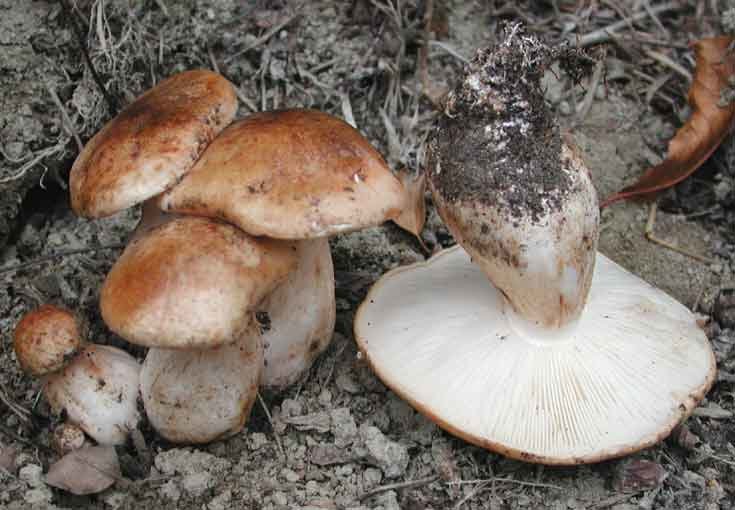

Poplar ryadovka is a completely edible mushroom, but only after it has been washed, soaked and boiled to eliminate bitterness. The poplar row grows in deciduous plantings under poplars, well covered with fallen leaves, always in large colonies. Poplar rows are common wherever poplars grow - these are the territories of North America and Canada, Western and Eastern Europe, Central Asia, as well as central and southern Russia, the Urals, Siberia and the Far East. The main period of her growth begins in the season of autumn leaf fall, somewhere from the end of August, and it ends at the end of October.
The poplar row is eaten exclusively in salted or pickled form after thorough washing, soaking and boiling.
Video about the mushroom Ryadovka poplar:
Similarities with other species
Many mushroom pickers call poplar ryadovka simply poplar mushroom. These rather large rows with characteristic yellow or terracotta caps do not belong to the category of very popular mushrooms. Underfields grow exclusively under poplar or aspen plantations and have a rather pronounced external resemblance to the ryadovka ciliated or ruined Tricholoma pessundatum.
However, it is important to remember that the wavy-legged ryadovka can cause a fairly severe disorder of the digestive system. The main difference is the place of growth, since the ruined row belongs to mycorrhiza formers with coniferous trees. This type of mushroom is not capable of mass formation and accumulation of fruit bodies.
Among other things, the poplar tree can be distinguished by a very bright and characteristic cucumber or flour smell, due to the place where the mushroom grows. Also, for young fruiting bodies of the underfloor, the location under the litter or some drowning in the soil is characteristic, due to which only brownish, semicircular caps, which look like potato tubers, rise above the soil surface. Inexperienced mushroom pickers often confuse the poplar rower with valuy, which is also explained by the external similarity of the young fruit bodies of these two species.
